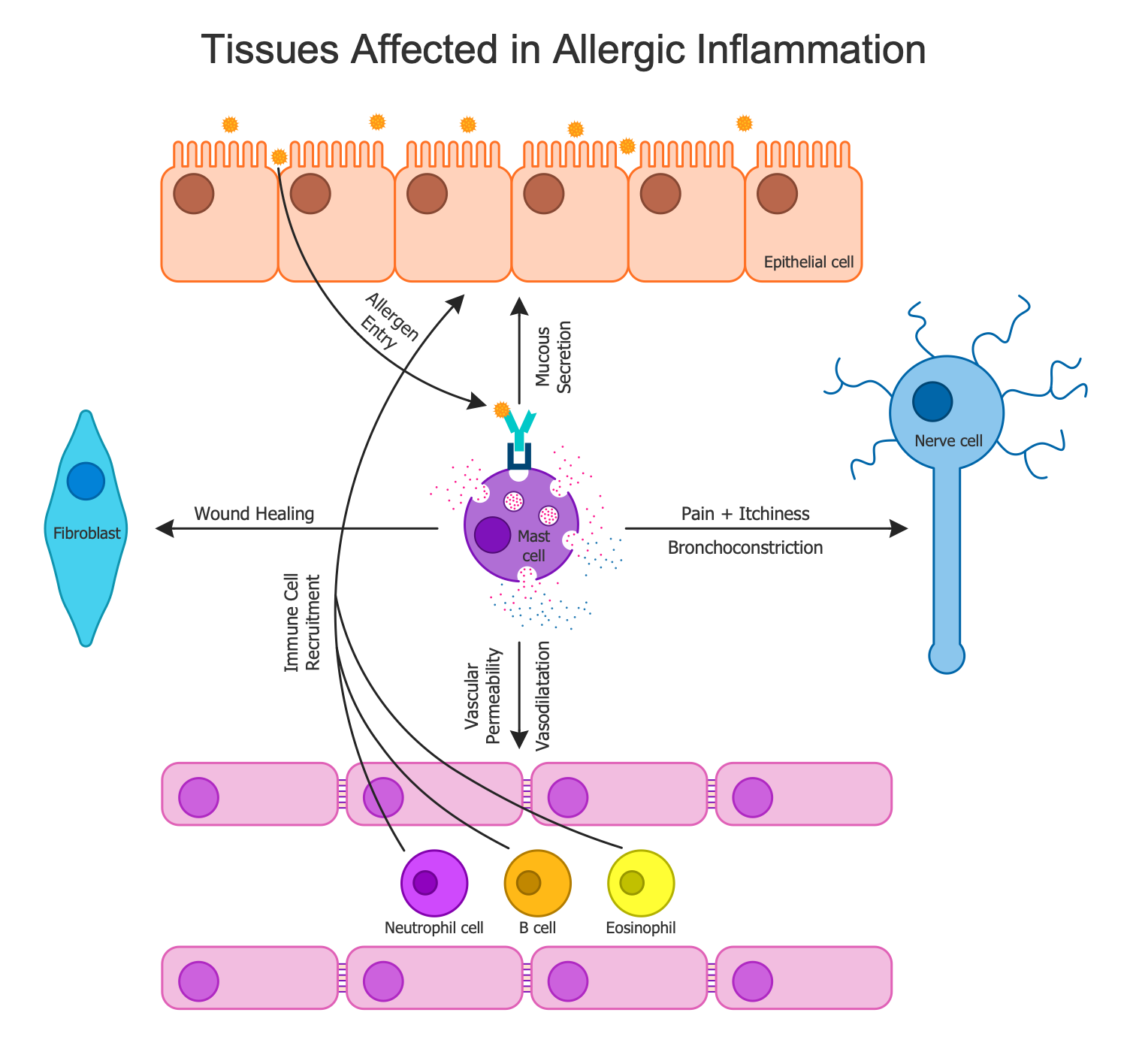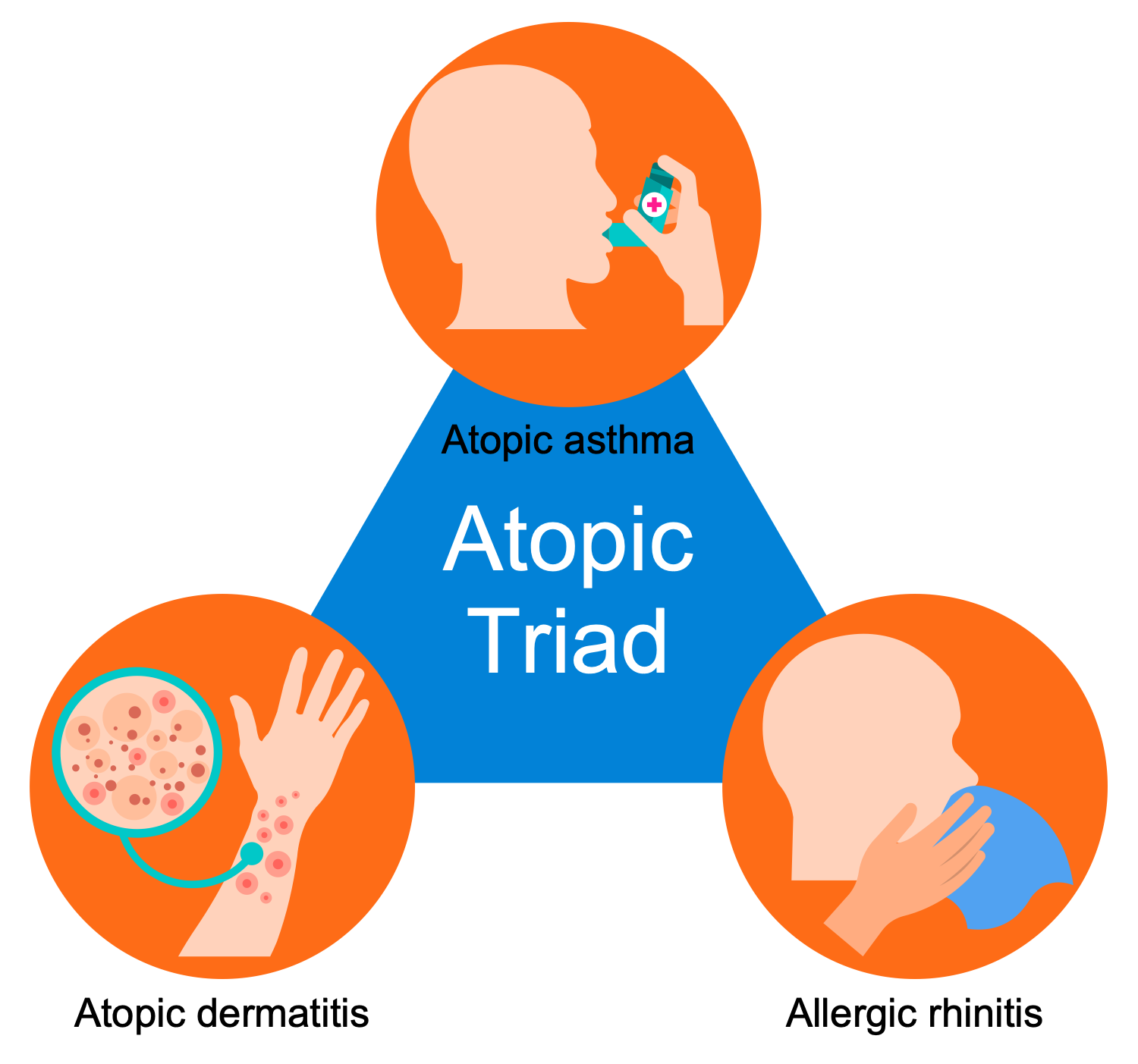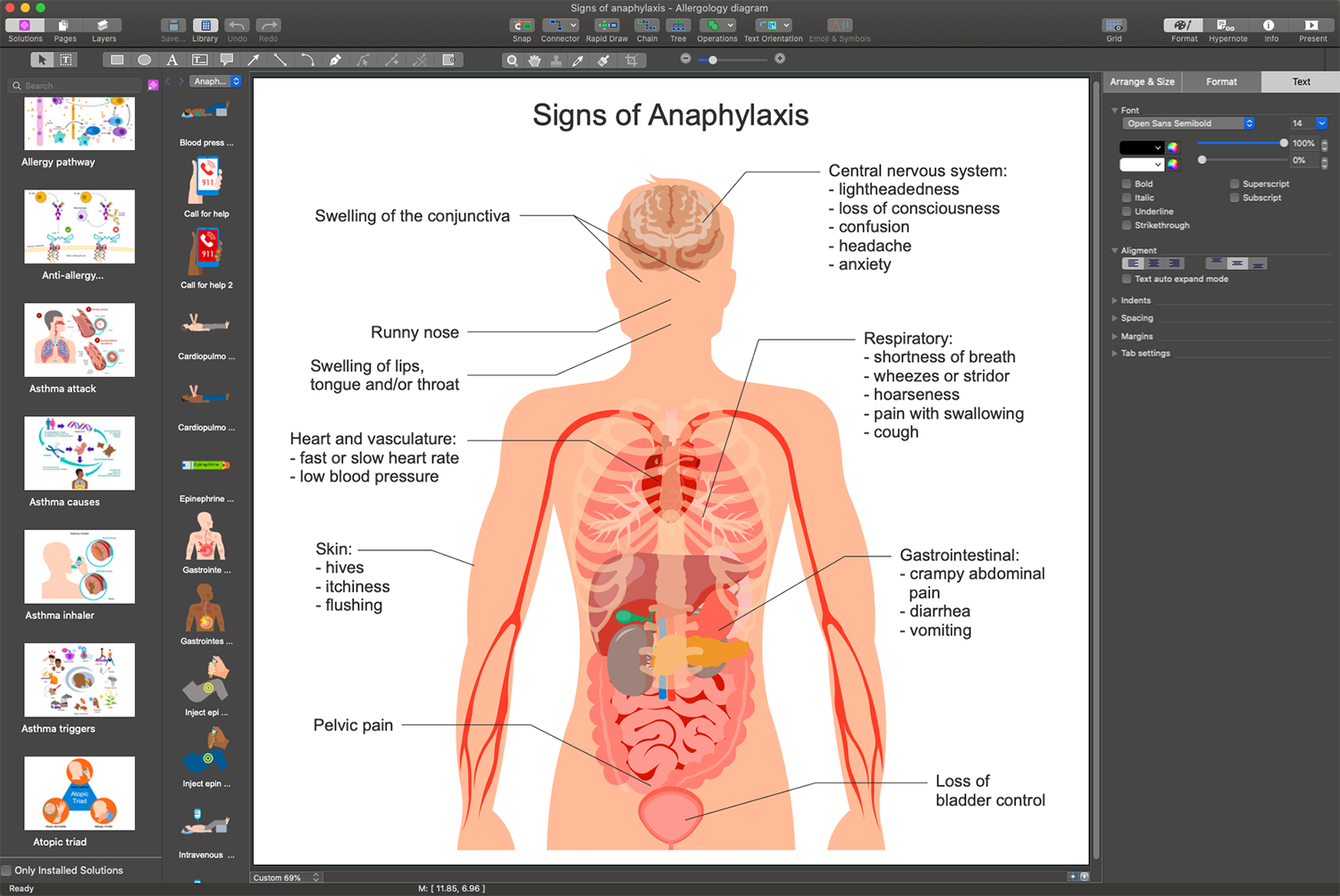Allergic Reaction
Allergic reaction is an exaggerated sensitivity (hypersensitivity) to specific compounds called allergens. It occurs for the reason of an abnormal response of the immune system to common substances harmless in a majority of people. Allergic reaction is observed at the contact of the skin, eyes, nose, respiratory tract, gastrointestinal tract with an irritant, or as a result of injections.
There are four types of allergic reactions I, II, III, and IV. Type I, II, and III are immediate reactions, type IV is a delayed reaction.
Type I or anaphylactic reactions are mediated by IgE proteins. These are allergic rhinitis, allergic dermatitis, food allergies, bronchial asthma, allergic conjunctivitis, anaphylaxis. In response to a certain trigger, the body produces IgE protein or immunoglobulin E. IgE molecules bind with the allergen molecules, as a result of this reaction the special chemicals like histamine are released and cause inflammatory symptoms. Common symptoms of allergic reactions include rashes, red and watery eyes, sneezing, hives, itching, nasal blockage, cough, wheezing, abnormal breathing sounds, anxiety, nausea or vomiting, swelling of the face, eyes, or nose mucous membrane. These reactions are caused by plants, pollen, foods, animal dander, insect bites, medications, and others. Typically, the first facing with allergen isn't dangerous but the later repetitive impact can trigger the more serious response.
Type II or cytotoxic reactions are mediated by IgG and IgM antibodies. They damage cells by activating a complement system of immunity. They are observed at the autoimmune hemolytic anemia, immune thrombocytopenia, autoimmune neutropenia.
Type III or immunocomplex reactions are also mediated by IgG and IgM antibodies. At their reaction with the allergen, the immunocomplexes are formed. This allergy type is common for lupus, Arthus reaction, serum sickness.
Type IV or cell-mediated reactions occur after 24 hours of exposure. For example, these are skin reactions appearing as a result of sensitivity to some metals, jewelry, latex.

Example 1. Allergic Reaction
Allergic reactions are incredibly common today and can have different degrees of severity. They can occur in a mild or severe and life-threatening form and concern both a small area of the body and the whole body. For example, a rash or redness on the face, hands, or other parts of the body is considered as a mild form of an allergic reaction. The time of appearing an allergic reaction as a response to some allergen exposure can also differ. Allergic reactions may occur both within seconds or minutes after exposure or after several hours. The most severe kind is called anaphylaxis or anaphylactic shock. It is a sudden reaction taking place within a few minutes of exposure and requiring immediate medical help.
Use the ConceptDraw DIAGRAM software and Allergology solution from the Health area of ConceptDraw Solution Park to illustrate the symptoms of allergic reaction for any allergen, its triggers, and tips for eliminating consequences. Now you can design your allergy illustrations, infographics, diagrams fast and simply.
Example 2. Atopic Triad
Allergology solution from the Health area of ConceptDraw Solution Park offers a large variety of pre-made vector design objects, pictograms, and icons. They are provided to simplify your work on designing the allergology illustrations and infographics. Simply drag required design elements from the libraries to your document and organize them in a desirable way to present allergy-related data and information in illustrative form. Depict the common allergy triggers, allergy symptoms, asthma attack mechanism, the severity of anaphylaxis, ways of first aid, allergy treatment methods, and many more.
A large collection of informative samples is also included in the Allergology solution and deserves your attention. All they are perfect examples of solution's use and suit for applying as quick-start templates when designing your own allergology diagrams.
Example 3. Signs of Anaphylaxis in ConceptDraw DIAGRAM
The infographics you see on this page were created in ConceptDraw DIAGRAM software using the Allergology Solution. They illustrate the allergic reaction and demonstrate the solution's capabilities and professional results you can achieve. An experienced user spent 15-20 minutes creating each of these samples.
Use the powerful tools of the Allergology Solution for ConceptDraw DIAGRAM software to create your own infographics and diagrams of any complexity fast and easy, and then successfully use them in your work activity.
All source documents are vector graphic documents. They are available for reviewing, modifying, or converting to a variety of formats (PDF file, MS PowerPoint, MS Visio, and many more graphic formats) from the ConceptDraw STORE. The Allergology Solution is available for all ConceptDraw DIAGRAM users.

